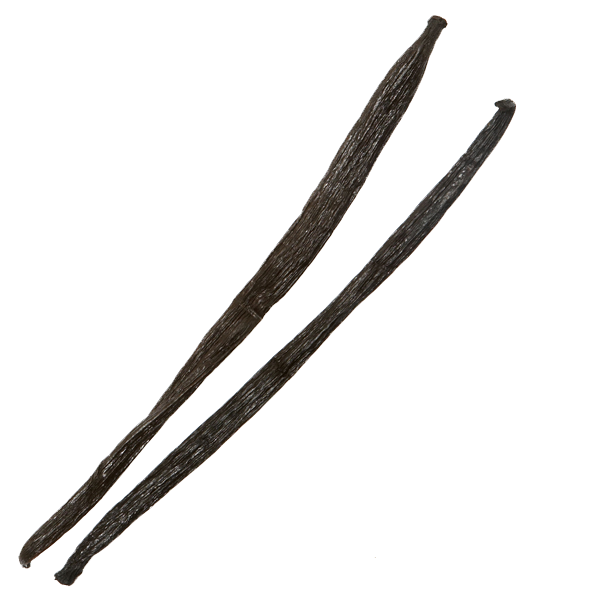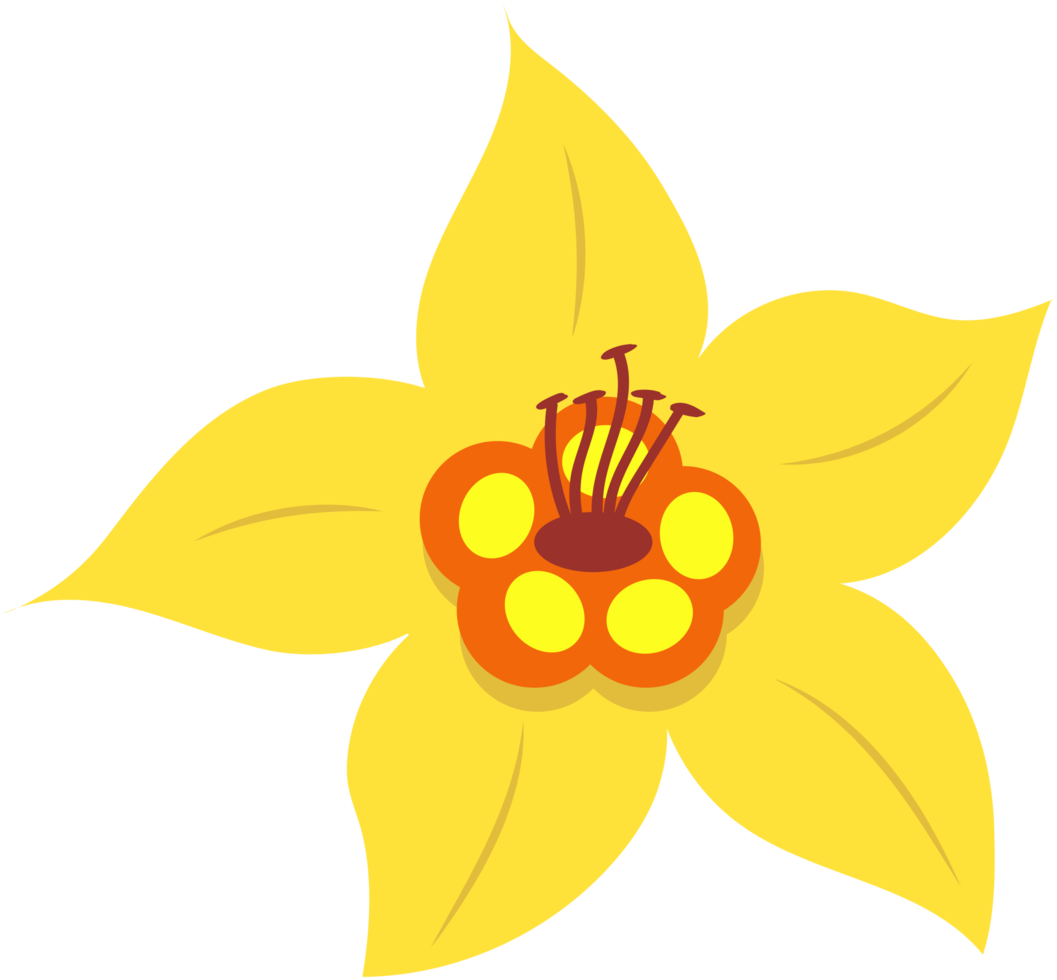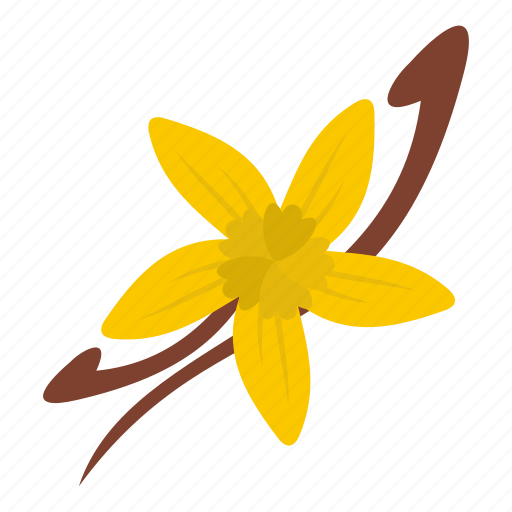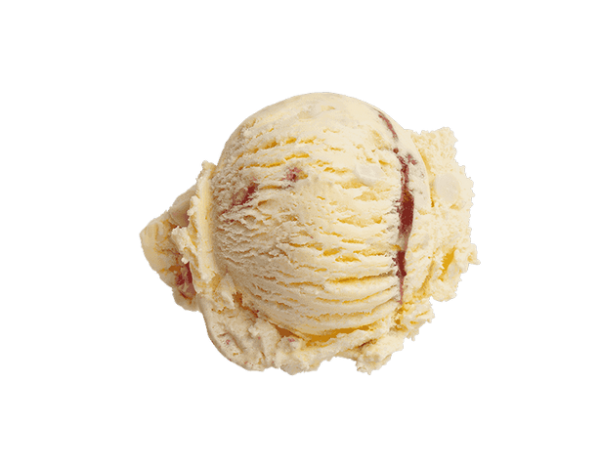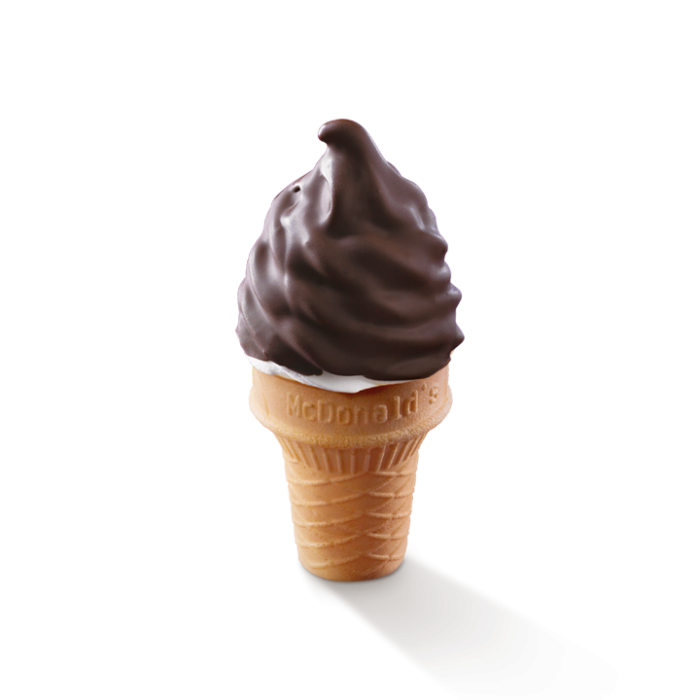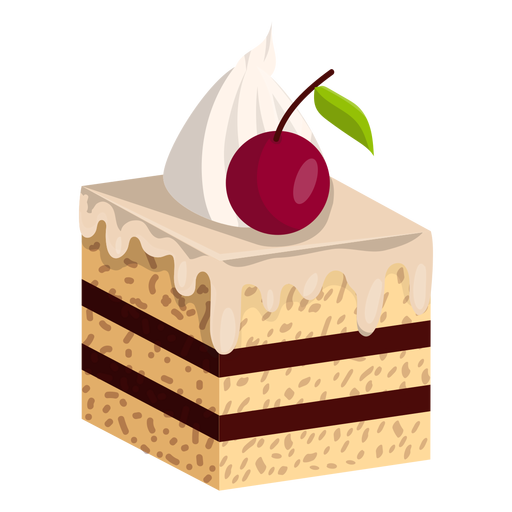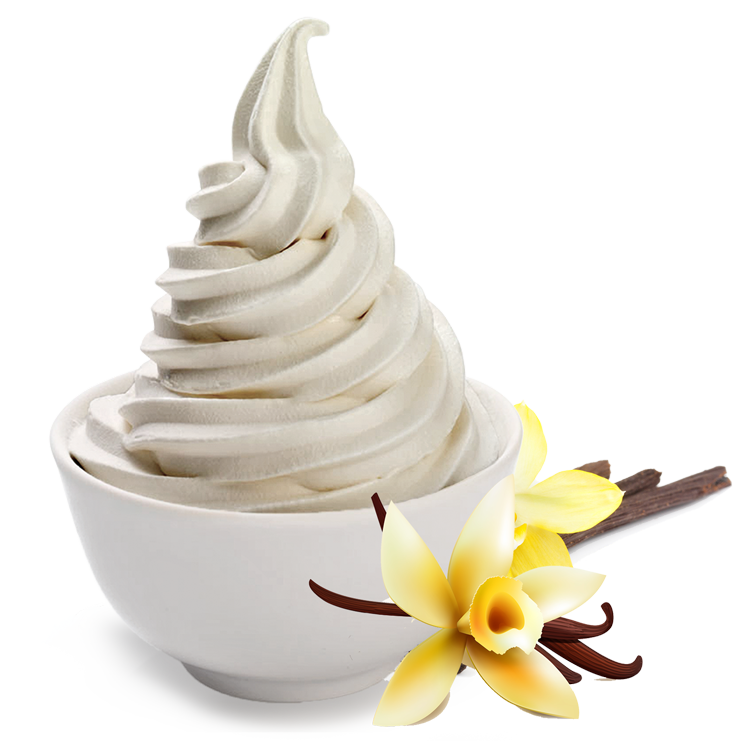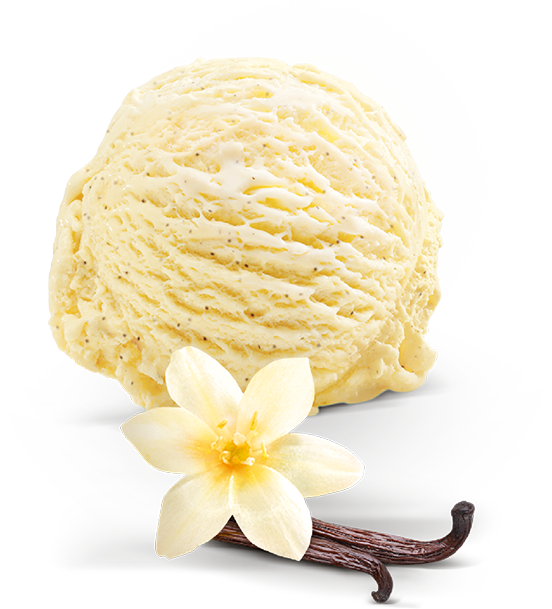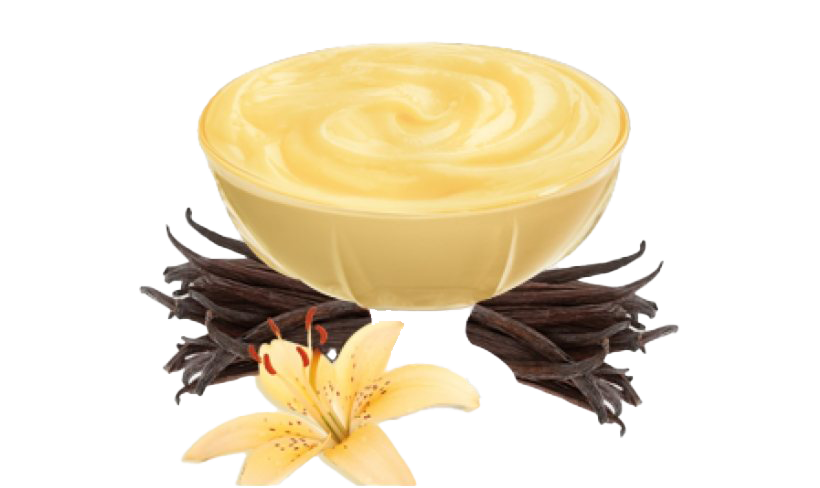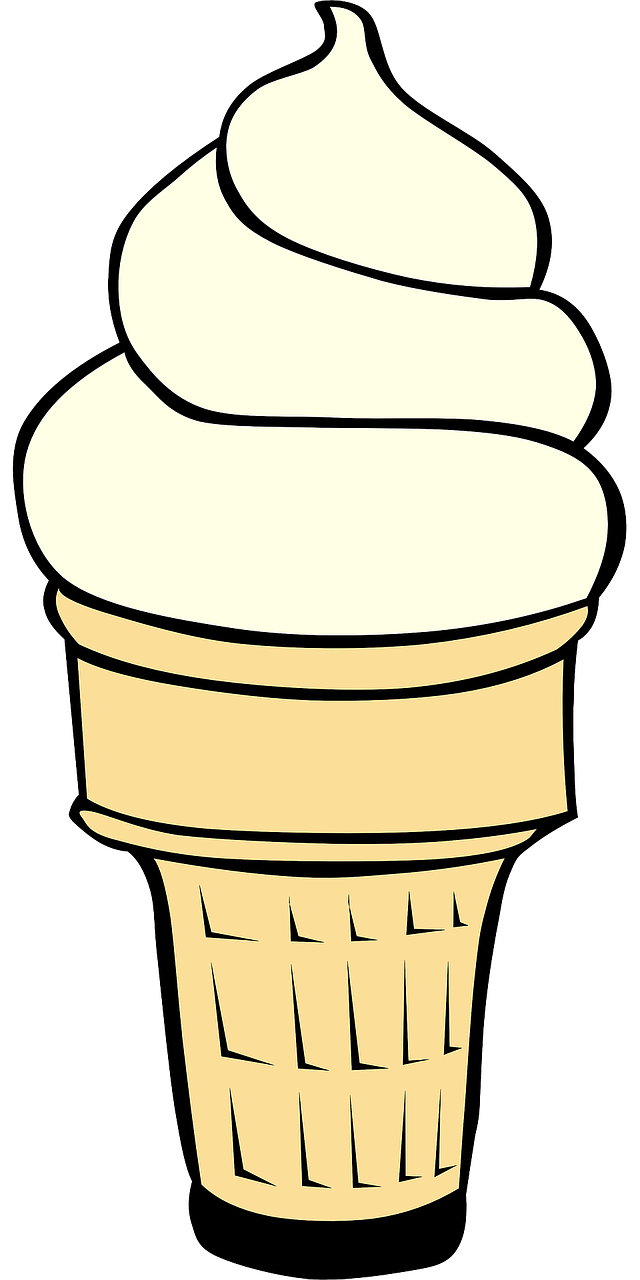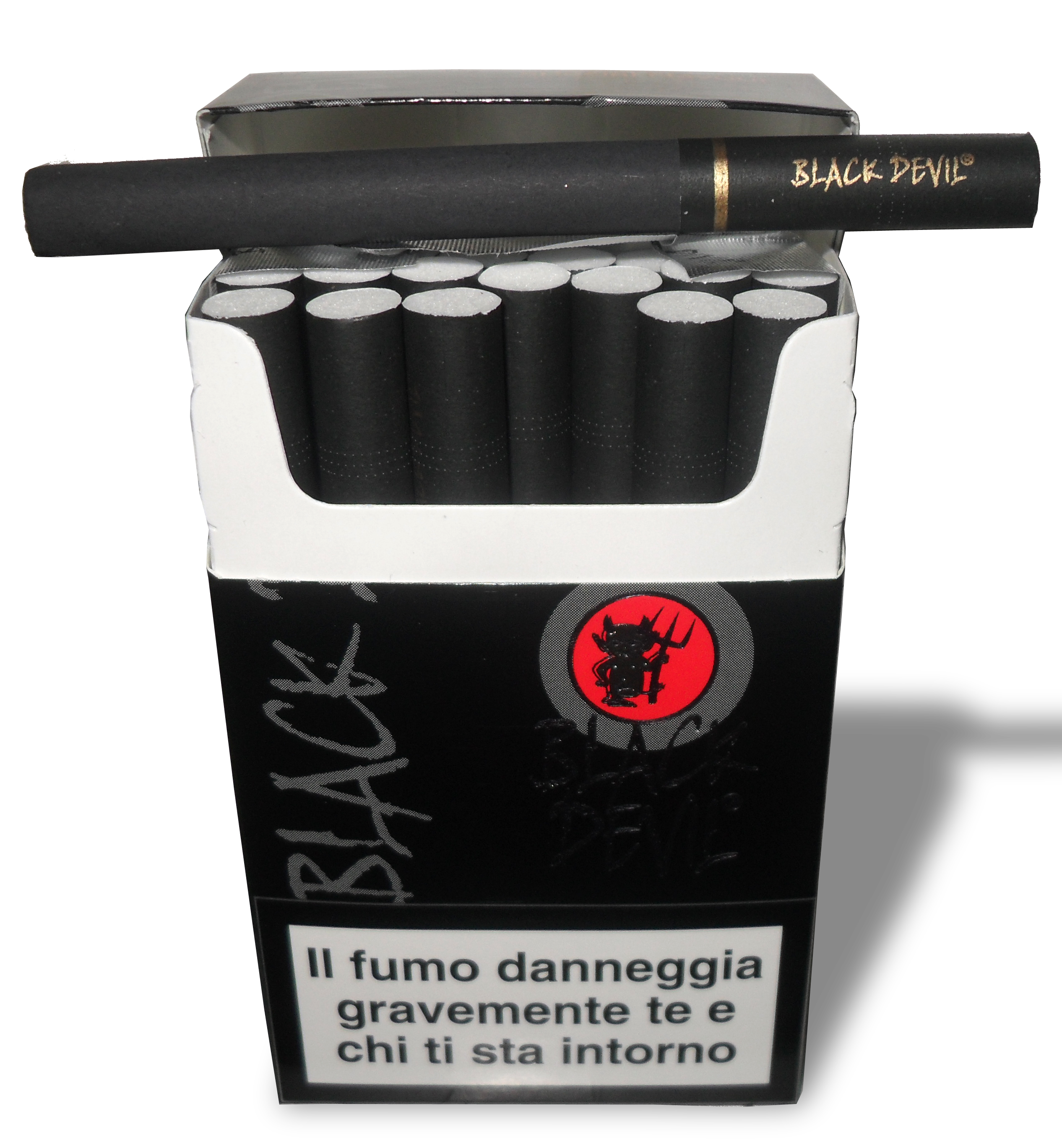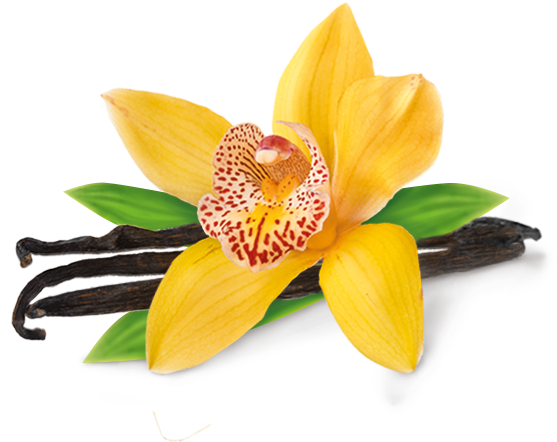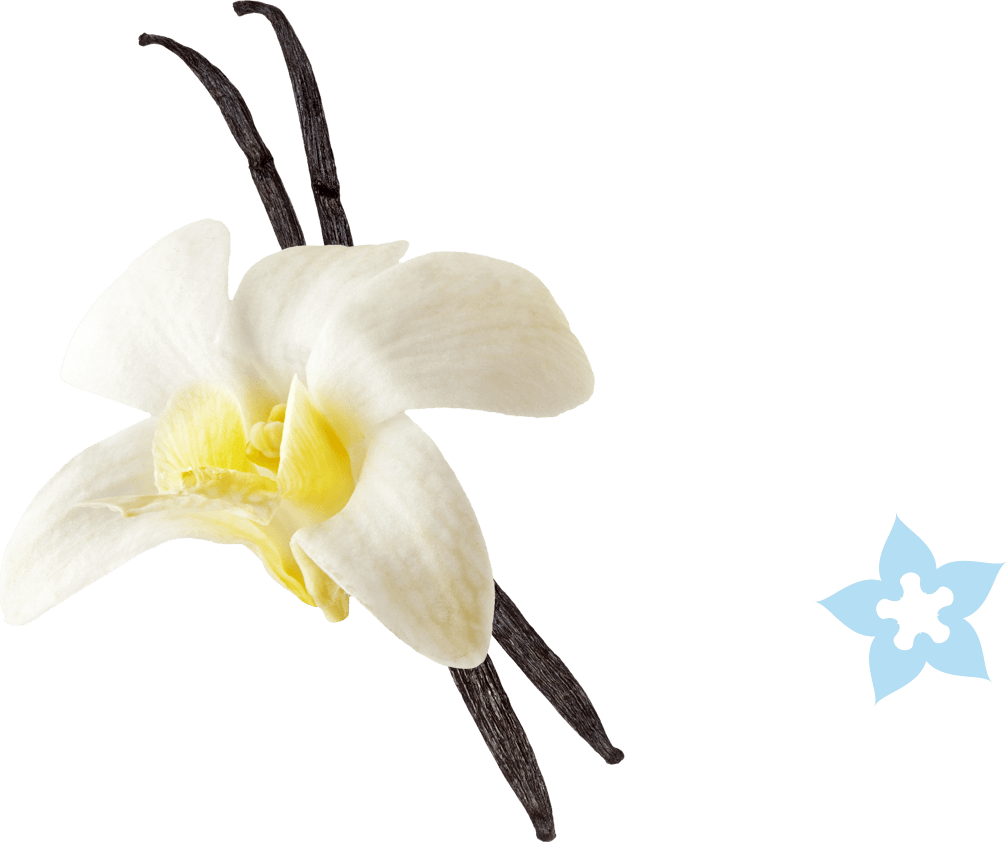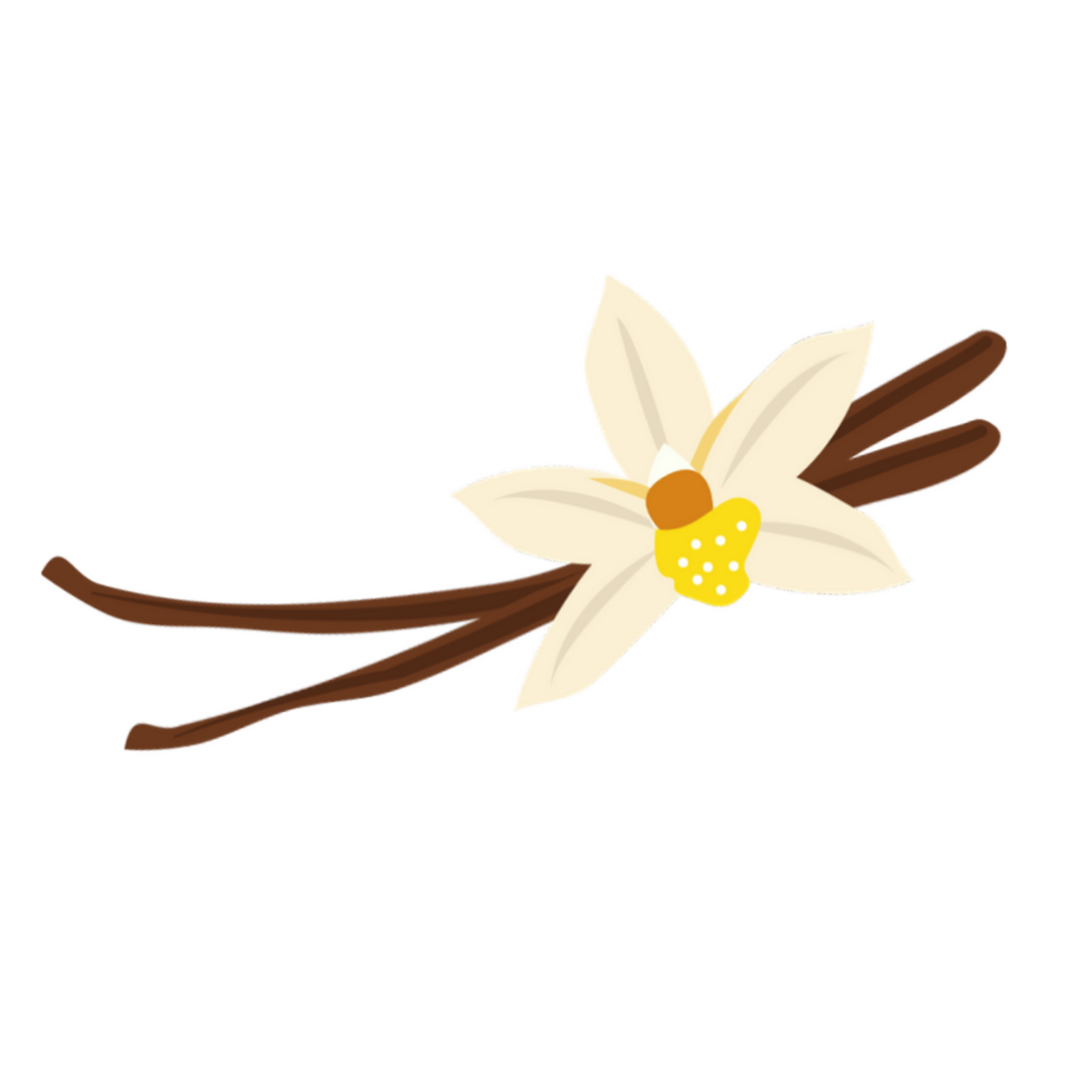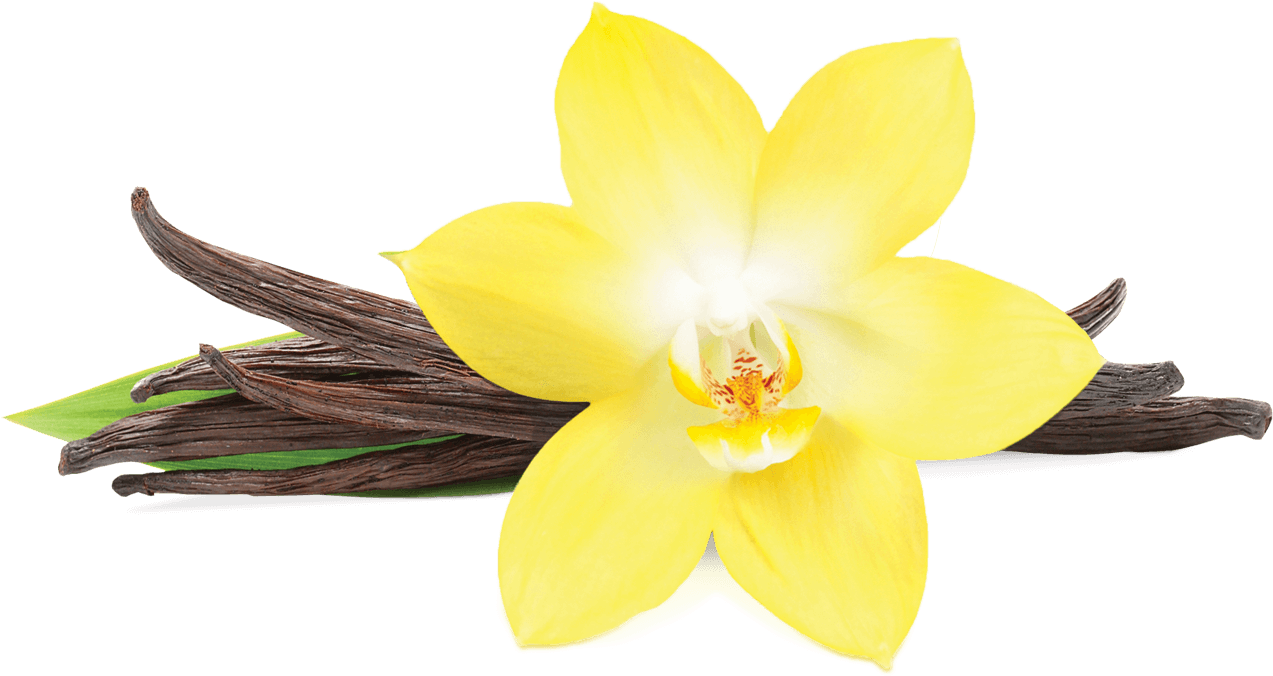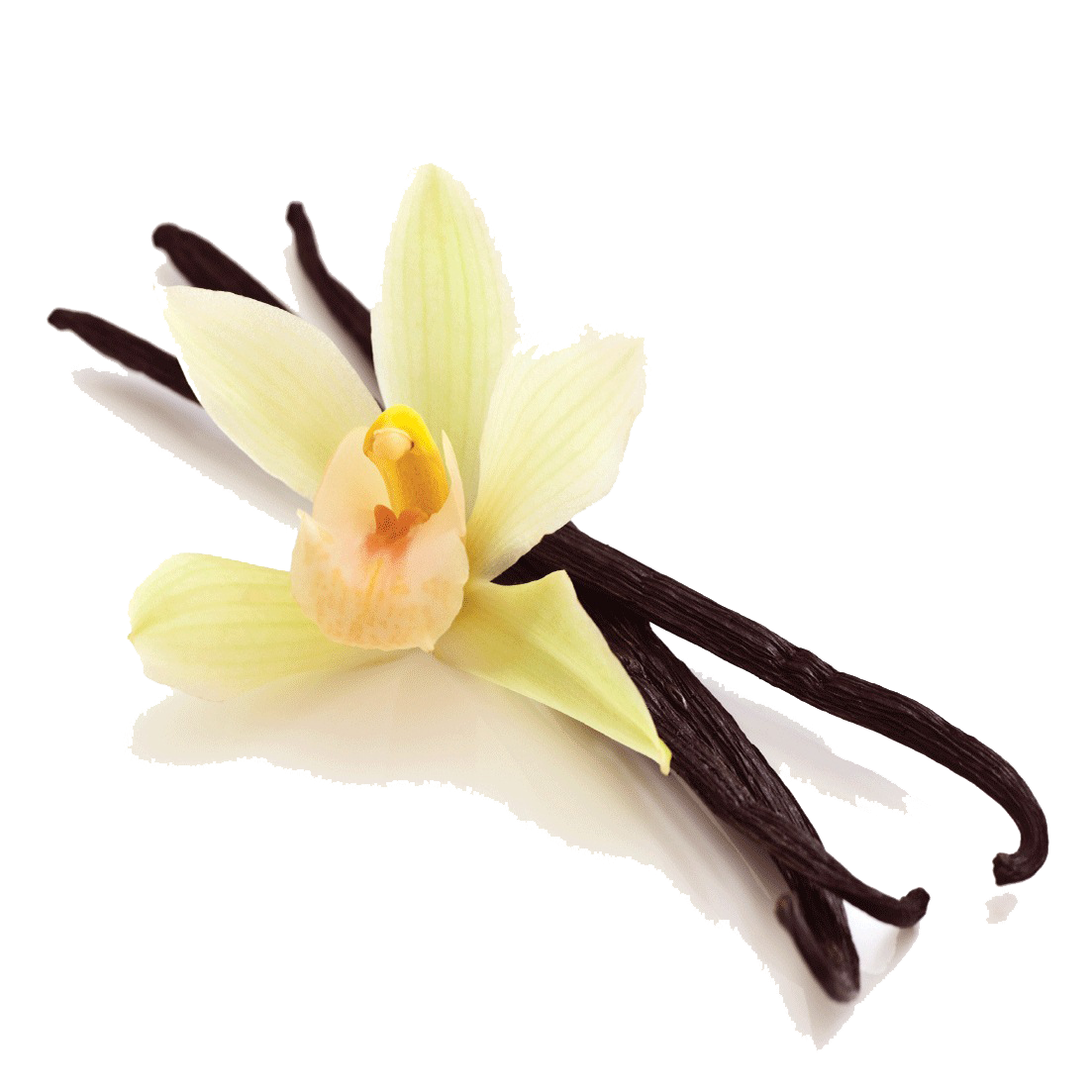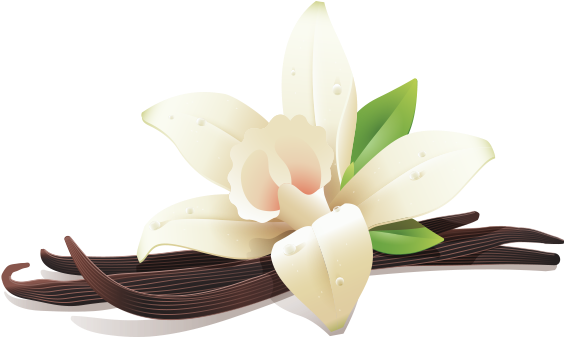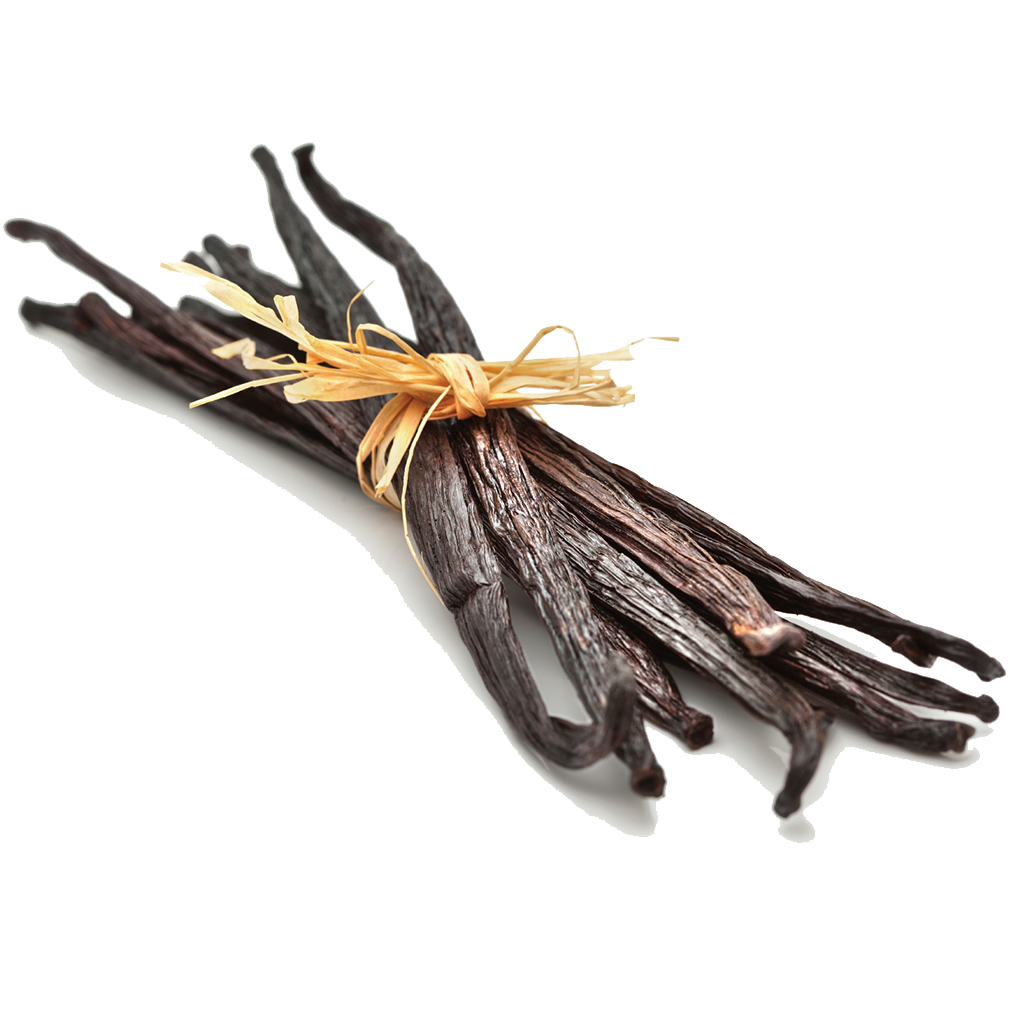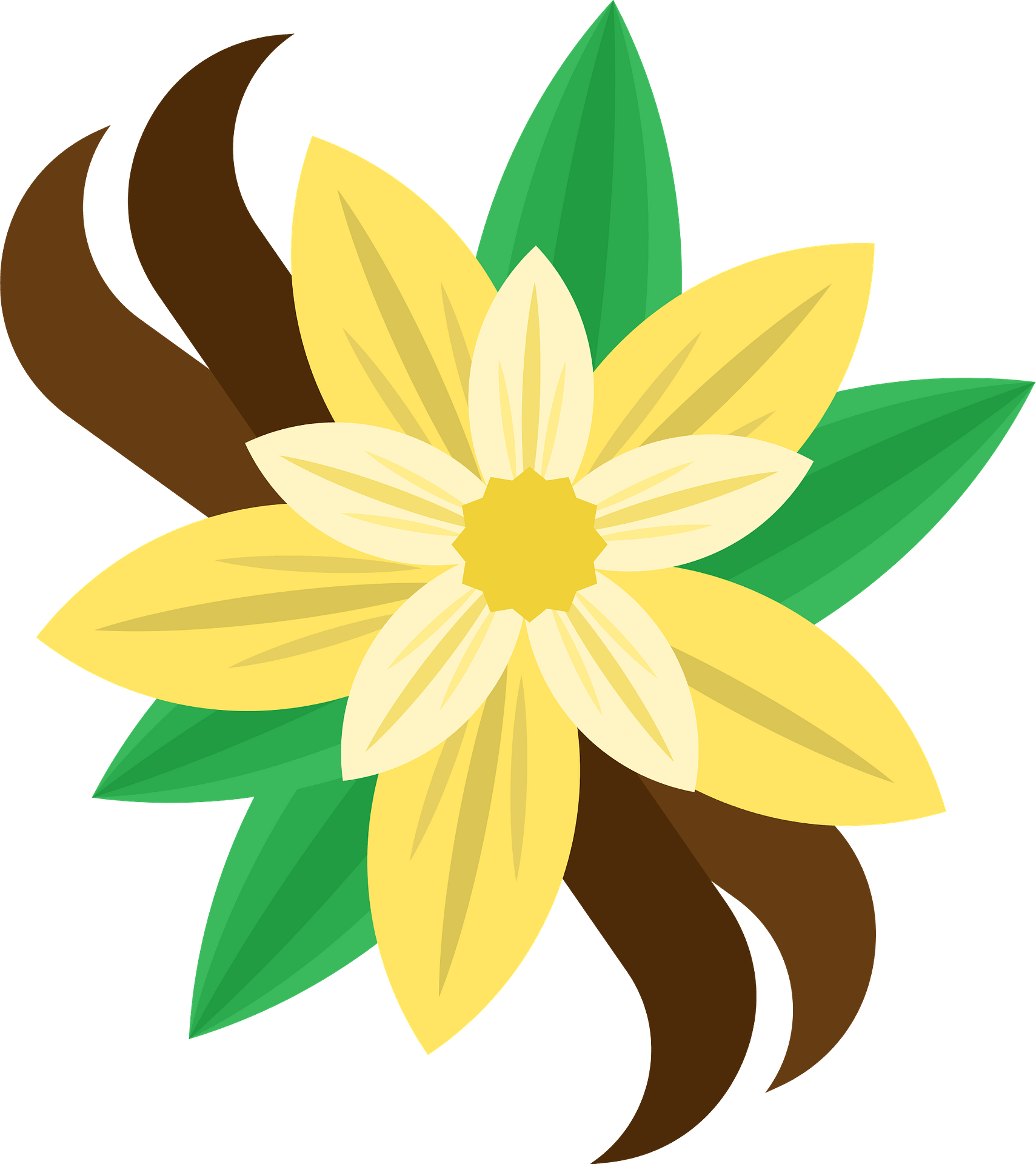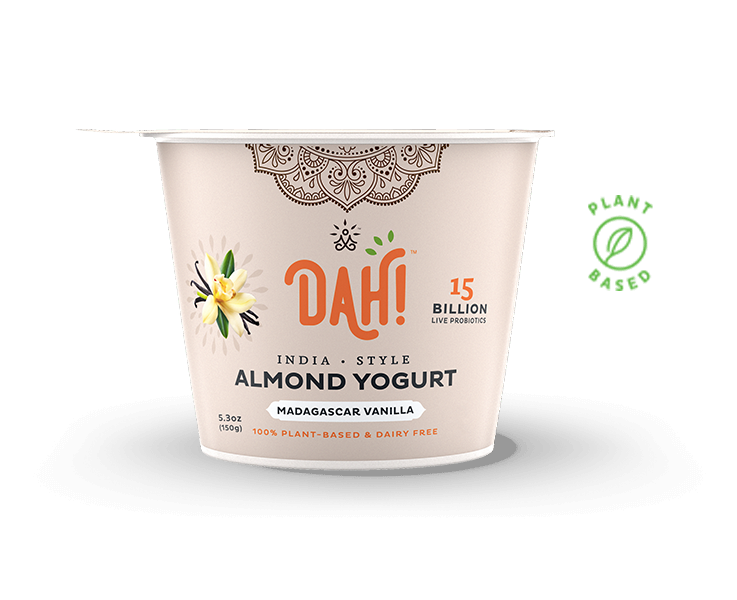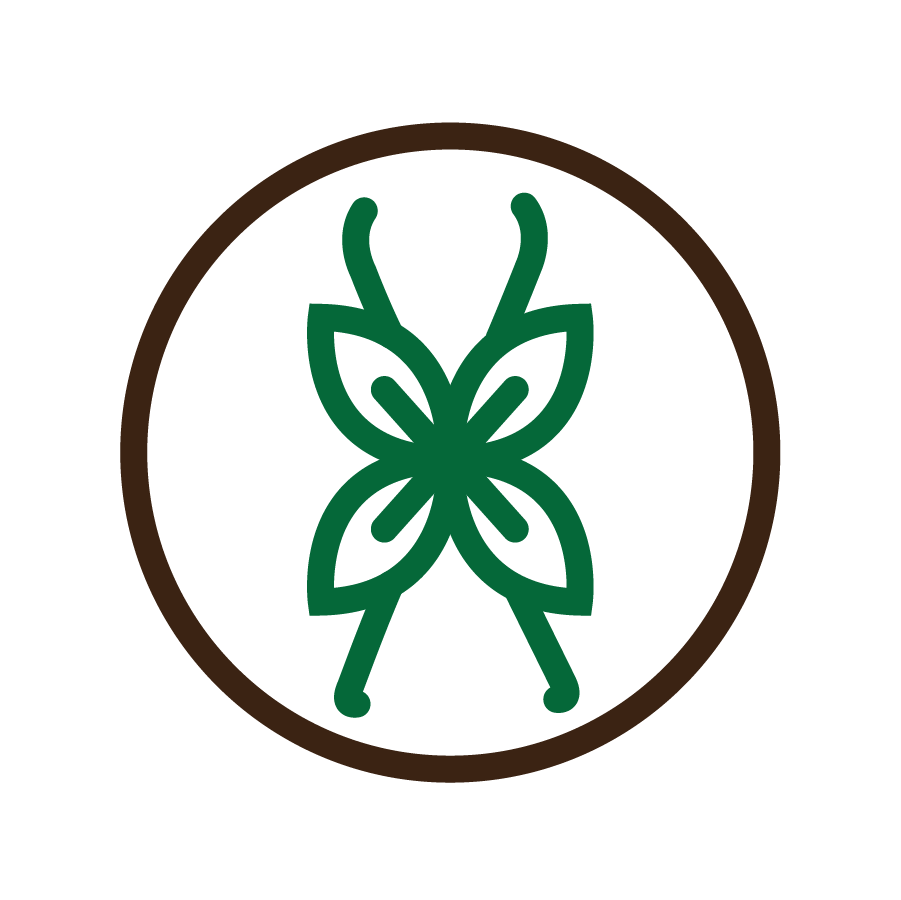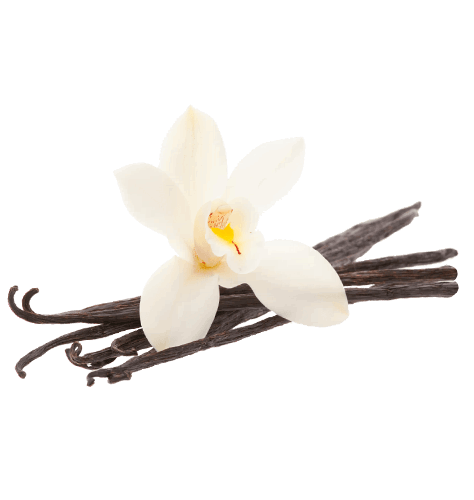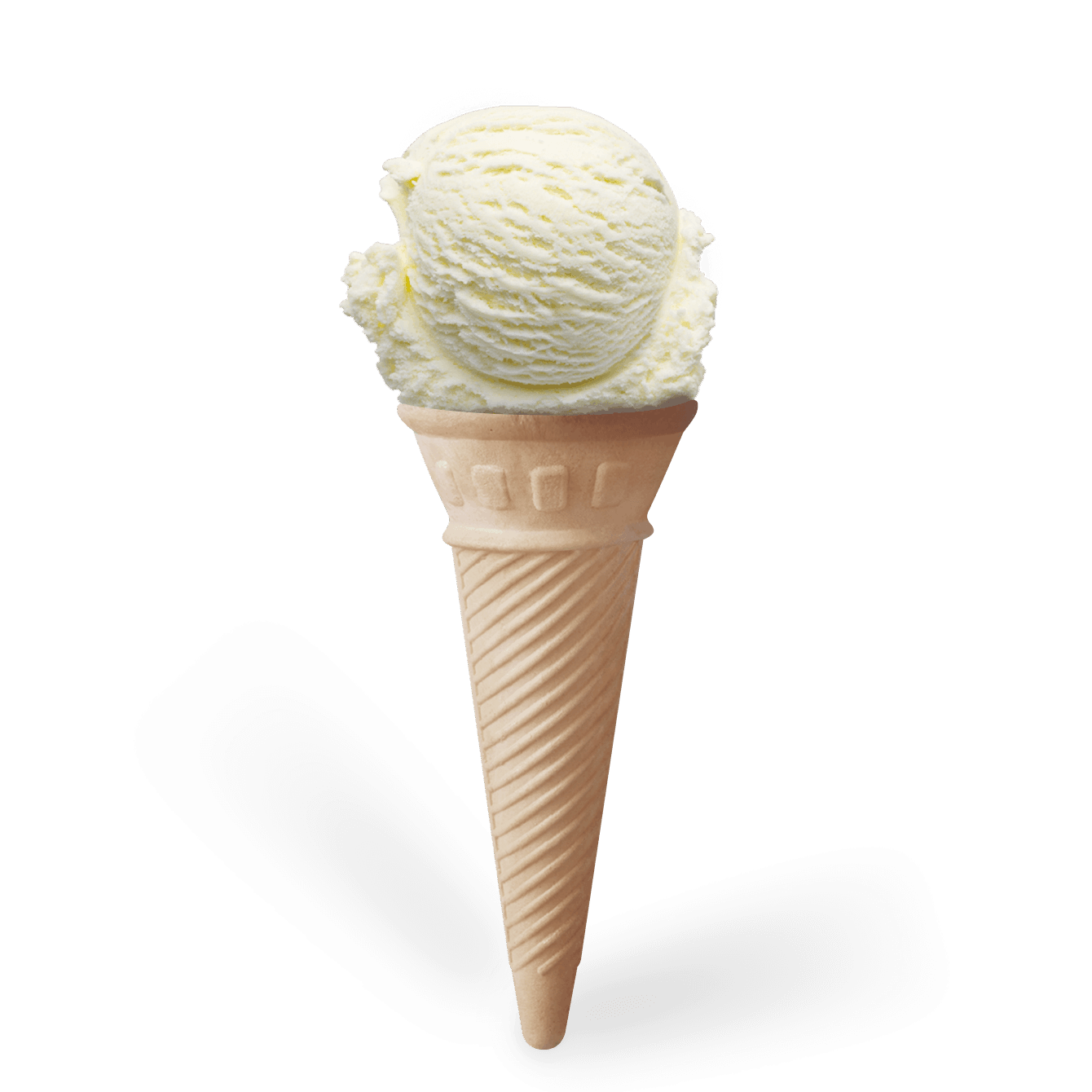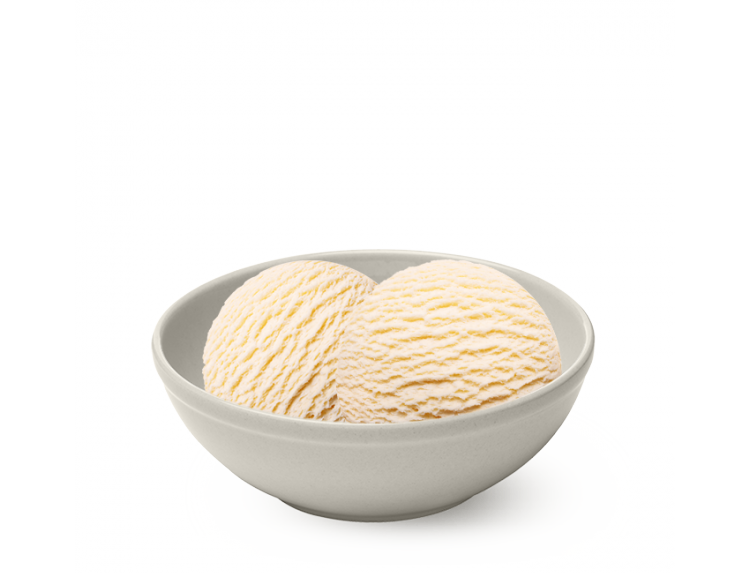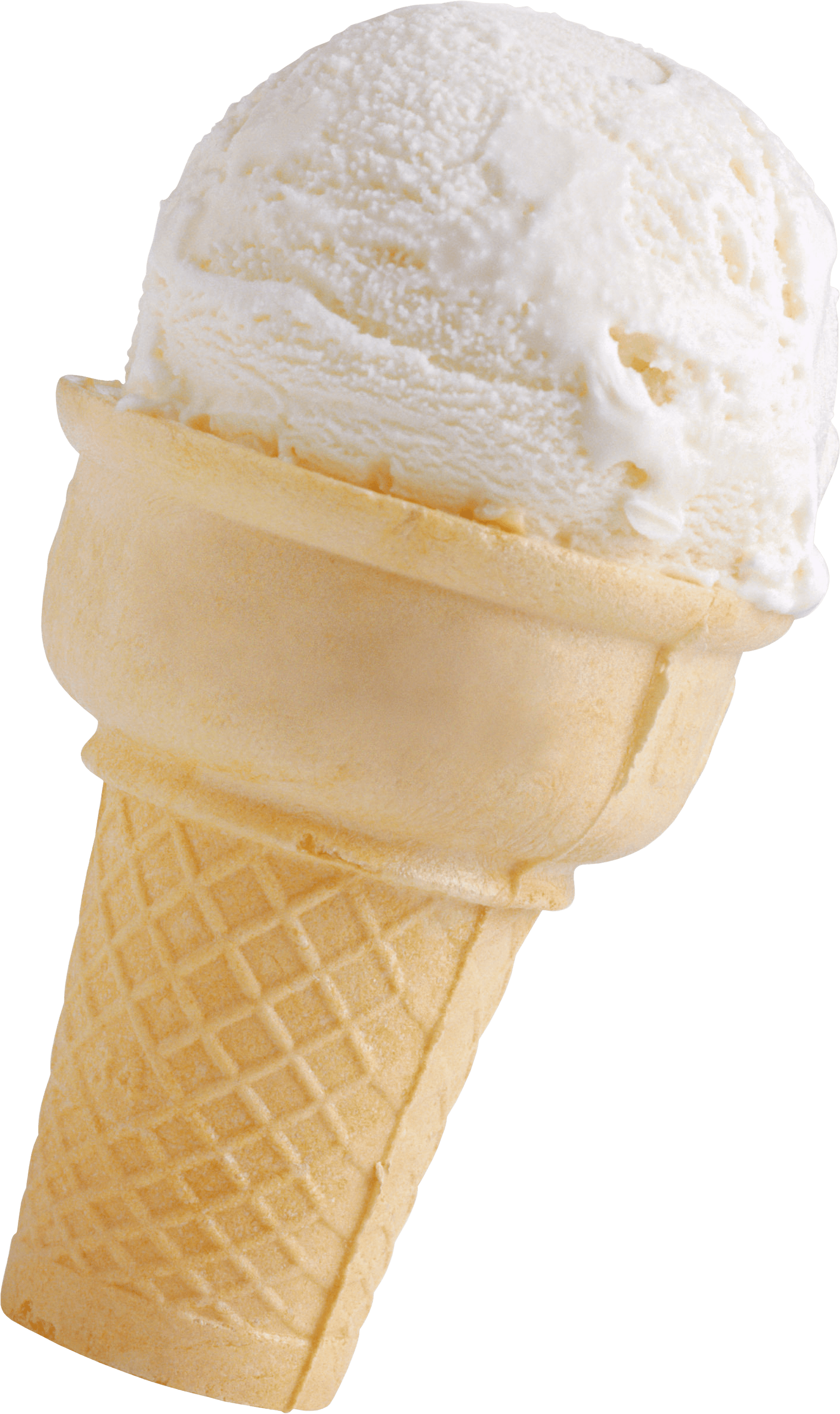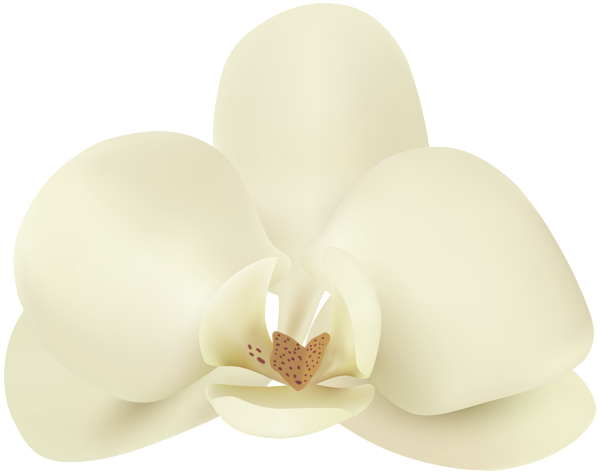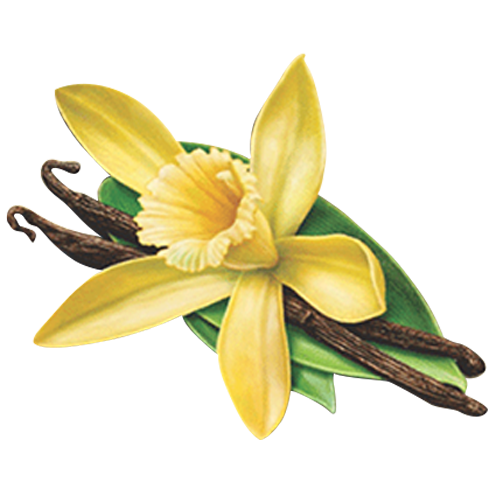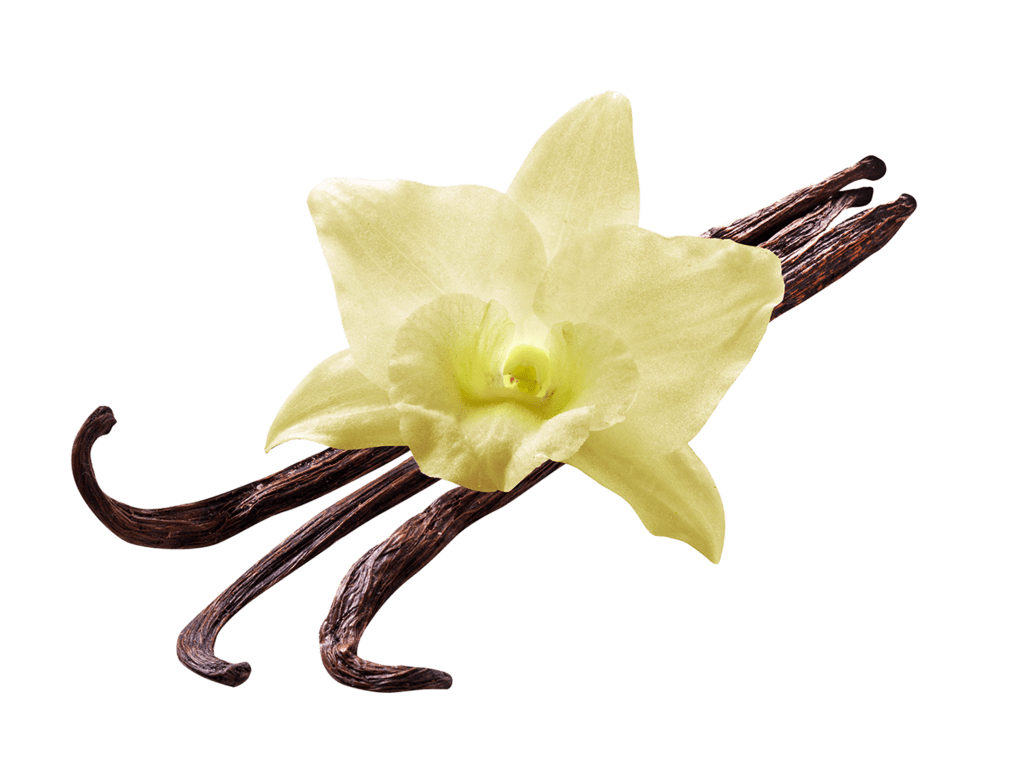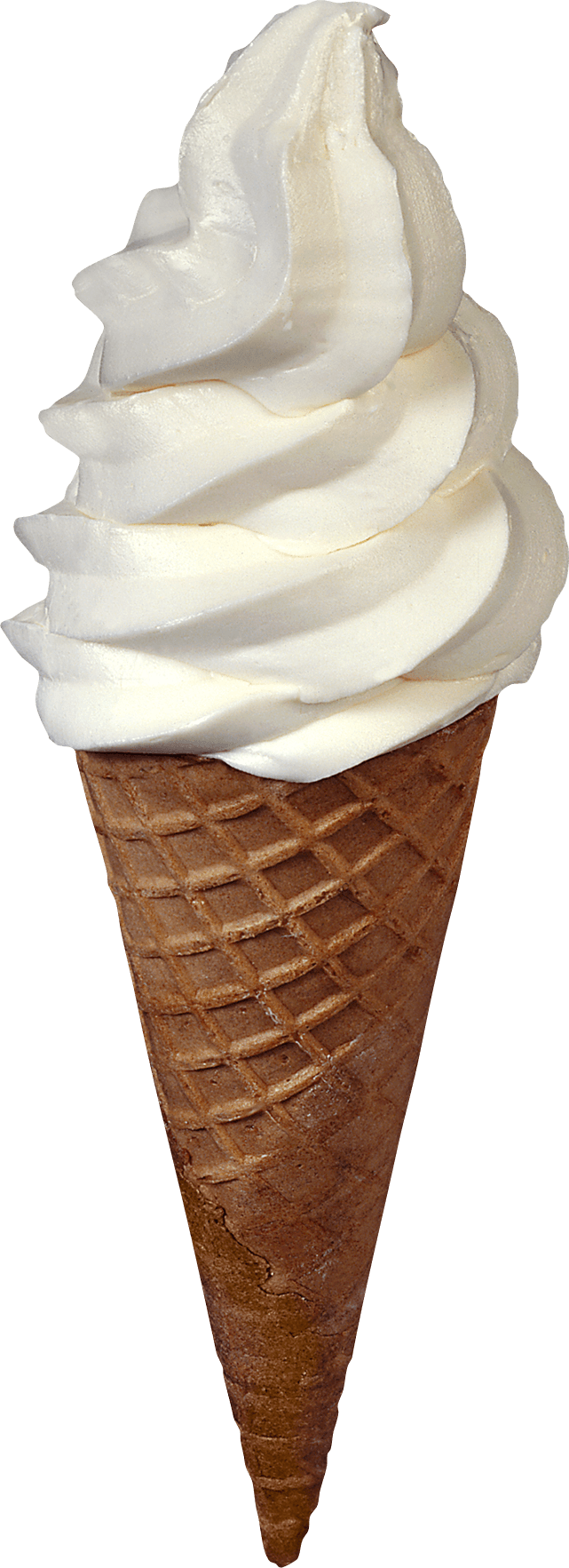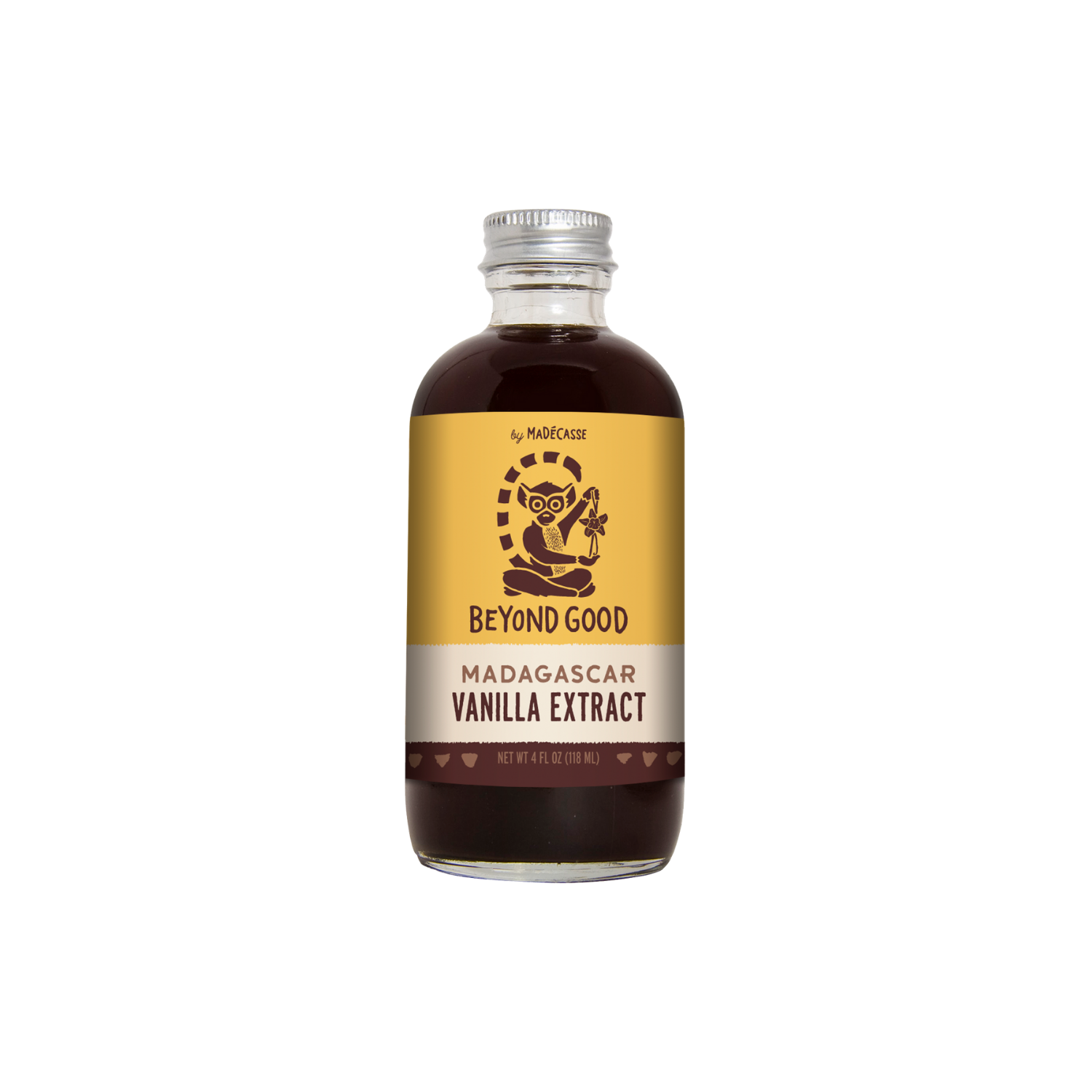Download top and best high-quality free Vanilla PNG Transparent Images backgrounds available in various sizes. To view the full PNG size resolution click on any of the below image thumbnail.
License Info: Creative Commons 4.0 BY-NC
Vanilla is a spice made from orchids of the genus Vanilla, mostly from the Mexican flat-leaved vanilla variety (V. planifolia). Vanilla is derived from vainilla, a diminutive of the Spanish word vaina (vaina meaning a sheath or a pod), and simply means “small pod.” The vanilla orchid vine, named tllxochitl by the Aztecs, was grown by pre-Columbian Mesoamericans.
To make the plants produce the fruit from which the vanilla spice is made, pollination is necessary. This fact was discovered in 1837 by Belgian botanist Charles François Antoine Morren, who pioneered artificially pollination the plant. The technique was found to be financially unviable and was never used commercially. Edmond Albius, a 12-year-old enslaved kid living on the French Indian Ocean island of Réunion, discovered that the plant could be hand-pollinated in 1841.
Hand-pollination enables the plant to be grown all over the world. Jean Michel Claude Richard, a well-known French botanist and plant collector, erroneously claimed to have discovered the technique three or four years earlier. Albius was regarded as the genuine discoverer at the end of the twentieth century.
Vanilla is presently produced in three primary species worldwide, all of which are descended from a species that originated in Mesoamerica, including modern-day Mexico. V. planifolia (syn. V. fragrans), which is found on Madagascar, Réunion, and other tropical islands in the Indian Ocean; V. tahitensis, which is found in the South Pacific; and V. pompona, which is found in the West Indies, Central America, and South America. The V. planifolia species, more often known as Bourbon vanilla (from the previous name of Réunion, Île Bourbon) or Madagascar vanilla, is grown in Madagascar and its adjacent islands in the southern Indian Ocean, as well as in Indonesia. Two-thirds of the world’s supply of vanilla is grown in Madagascar and Indonesia.
Because producing the vanilla seed pods is labor-intensive, vanilla is the second most costly spice after saffron. On the other hand, Vanilla is frequently utilized in commercial and household baking, perfume making, and aromatherapy.
The Totonac people, who dwell on Mexico’s east coast in the present-day state of Veracruz, are said to have been among the first to produce vanilla during the Aztec Empire’s reign (around the 15th century). Aztecs overran the Totonacs from the central highlands of Mexico, who acquired a love for vanilla pods. After the ripe fruit fades and becomes black immediately after being harvested, they termed it tlilxochitl, or “black flower.” In the 1520s, Spanish adventurer Hernán Cortés is credited with bringing vanilla and chocolate to Europe.
Mexico was the leading producer of vanilla until the mid-nineteenth century. French entrepreneurs sent vanilla fruits to the islands of Réunion and Mauritius in 1819 to grow vanilla there. The pods began to grow after Edmond Albius learned how to pollinate the blooms fast by hand in 1841. The tropical orchids were quickly shipped from Réunion to the Comoros Islands, Seychelles, Madagascar, and pollination instructions.
Madagascar, Réunion, and the Comoros Islands produced 200 metric tons of vanilla beans in 1898, accounting for almost 80% of global production. According to 2019 statistics from the United Nations Food and Agriculture Organization, Madagascar was the top producer of vanilla in 2018, followed by Indonesia.
Vanilla Production
The market price of vanilla soared dramatically in the late 1970s when a tropical hurricane devastated major croplands, and remained expensive into the early 1980s, despite the arrival of Indonesian vanilla. The cartel that had regulated vanilla prices and distribution since its inception in 1930 dissolved in the mid-1980s. Prices fell by 70% over the following five years, reaching roughly US$20 per kilogram; however, after tropical storm Hudah hit Madagascar in April 2000, prices soared dramatically again.
In the third year, a storm, political unrest, and bad weather drove vanilla prices to US$500/kg, attracting additional countries to the business. In 2005, a healthy harvest combined with decreasing demand due to counterfeit vanilla manufacturing brought the market price down to the $40/kg area. Prices had dropped to $20 per kilogram by 2010. In 2017, Cyclone Enawo prompted a similar increase to $500/kg.
Download Vanilla PNG images transparent gallery.
- Vanilla Transparent
Resolution: 600 × 600
Size: 127 KB
Image Format: .png
Download
- Vanilla Flower PNG Photo
Resolution: 1057 × 980
Size: 84 KB
Image Format: .png
Download
- Vanilla Flower PNG Cutout
Resolution: 512 × 512
Size: 32 KB
Image Format: .png
Download
- Vanilla PNG Clipart
Resolution: 600 × 469
Size: 158 KB
Image Format: .png
Download
- Vanilla Flower PNG Images
Resolution: 512 × 512
Size: 20 KB
Image Format: .png
Download
- Vanilla PNG Picture
Resolution: 700 × 700
Size: 155 KB
Image Format: .png
Download
- Vanilla PNG HD Image
Resolution: 512 × 512
Size: 98 KB
Image Format: .png
Download
- Vanilla Ice Cream
Resolution: 741 × 741
Size: 403 KB
Image Format: .png
Download
- Vanilla Ice Cream PNG File
Resolution: 552 × 609
Size: 410 KB
Image Format: .png
Download
- Vanilla Ice Cream Transparent
Resolution: 820 × 488
Size: 234 KB
Image Format: .png
Download
- Vanilla PNG Image HD
Resolution: 640 × 1280
Size: 174 KB
Image Format: .png
Download
- Vanilla PNG Images HD
Resolution: 2532 × 2736
Size: 4393 KB
Image Format: .png
Download
- Vanilla Flower PNG Photos
Resolution: 557 × 442
Size: 308 KB
Image Format: .png
Download
- Vanilla Flower Transparent
Resolution: 1007 × 842
Size: 107 KB
Image Format: .png
Download
- Vanilla Flower PNG Clipart
Resolution: 1080 × 1080
Size: 163 KB
Image Format: .png
Download
- Vanilla Flower
Resolution: 1273 × 676
Size: 246 KB
Image Format: .png
Download
- Vanilla Ice Cream PNG
Resolution: 1103 × 1103
Size: 604 KB
Image Format: .png
Download
- Vanilla
Resolution: 564 × 337
Size: 105 KB
Image Format: .png
Download
- Vanilla PNG
Resolution: 1024 × 1024
Size: 543 KB
Image Format: .png
Download
- Vanilla PNG Pic
Resolution: 1709 × 1920
Size: 127 KB
Image Format: .png
Download
- Vanilla PNG File
Resolution: 737 × 600
Size: 258 KB
Image Format: .png
Download
- Vanilla Flower PNG
Resolution: 1044 × 980
Size: 36 KB
Image Format: .png
Download
- Vanilla Flower PNG Pic
Resolution: 901 × 900
Size: 15 KB
Image Format: .png
Download
- Vanilla Flower PNG File
Resolution: 474 × 500
Size: 26 KB
Image Format: .png
Download
- Vanilla Ice Cream PNG Pic
Resolution: 1340 × 1340
Size: 191 KB
Image Format: .png
Download
- Vanilla Ice Cream PNG Image
Resolution: 750 × 573
Size: 193 KB
Image Format: .png
Download
- Vanilla Ice Cream PNG Photo
Resolution: 1782 × 3000
Size: 1867 KB
Image Format: .png
Download
- Vanilla Ice Cream PNG Cutout
Resolution: 600 × 474
Size: 103 KB
Image Format: .png
Download
- Vanilla Ice Cream PNG Images
Resolution: 3998 × 8000
Size: 1958 KB
Image Format: .png
Download
- Vanilla PNG Image
Resolution: 500 × 500
Size: 197 KB
Image Format: .png
Download
- Vanilla PNG Photo
Resolution: 1024 × 784
Size: 136 KB
Image Format: .png
Download
- Vanilla Ice Cream PNG Photos
Resolution: 641 × 1765
Size: 404 KB
Image Format: .png
Download
- Vanilla PNG Cutout
Resolution: 1500 × 1500
Size: 1226 KB
Image Format: .png
Download
- Vanilla PNG Images
Resolution: 1500 × 1500
Size: 407 KB
Image Format: .png
Download
- Vanilla Flower PNG Image
Resolution: 1362 × 1302
Size: 46 KB
Image Format: .png
Download
- Vanilla PNG Photos
Resolution: 600 × 600
Size: 20 KB
Image Format: .png
Download
